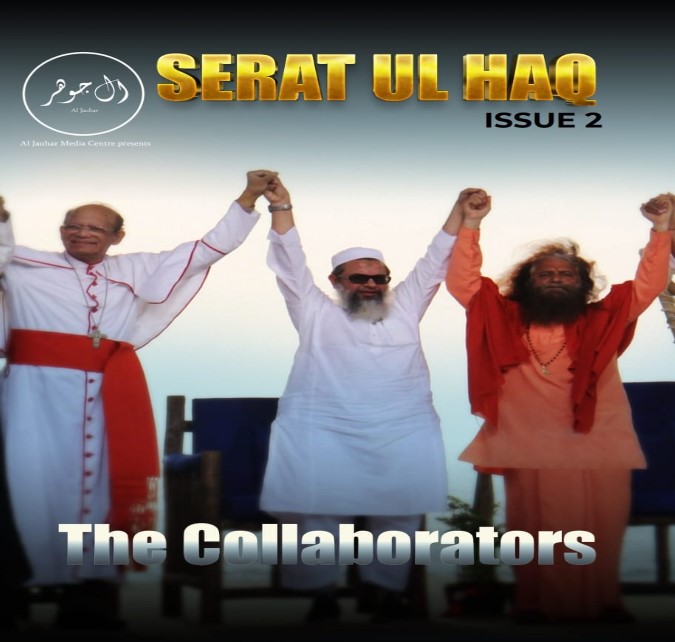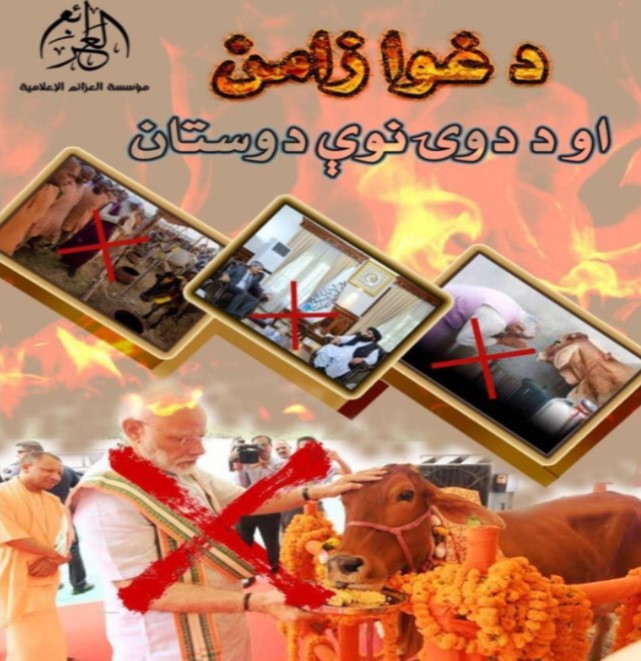Introduction
The Islamic State in Khorasan province (ISKP), operating in Afghanistan and Pakistan, has emerged as Islamic State’s (IS) most deadly branch. It has conducted attacks not only on the diplomatic missions of Russia and Pakistan in Kabul but also targeted Chinese businessmen in a Kabul hotel, launched cross-border attacks in Tajikistan and Uzbekistan, and carried out an armed attack on a shrine in Iran. The group has thrived in the media space as well as the operational space. In recent months, it has aggressively expanded its propaganda machinery, circulating print, video and audio releases to bolster its recruitment, outreach and fundraising activities.
Its multilingual propaganda campaign spreads across diverse languages from Tajik to Malayalam and has attracted many foreign fighters from various ethnicities and countries. These foreign cadres fought in the group’s ranks mainly as suicide bombers and turned out to pose a grave security threat to their respective countries’ interests in Afghanistan. A distressing concern in this context has been the surge in the group’s anti-India propaganda produced by its official media outlet: Al-Azaim Foundation. In its media releases, ISKP has regularly threatened to attack Hindus and Sikh minorities in Afghanistan and further promised of launching attacks on Indian soil – a threat on which it has acted.
ISKP’s media propaganda is predominantly disseminated on encrypted apps like Telegram and Rocket.Chat, and other content-sharing websites. The group has also developed its own surface-level website that acts as an archive for its media content. This Insight provides an in-depth analysis of ISKP’s India-centric narratives that are featured in its media channels and magazine, Voice of Khorasan (VOK). We argue that ISKP has emerged as the most hostile anti-India branch of IS. ISKP can mobilise Indian IS sympathisers in building pro-IS independent media outlets, thus raising the prospect of Indian IS supporters networking and collaborating with ISKP’s official media branch in the future.
Overview of IS-inspired and ISKP-linked Terror Plots Against India
In the 23rd issue of its Voice of Khorasan (VOK) magazine, ISKP claimed that IS-linked militants from India were responsible for carrying out blasts near Sangameswarar temple in Coimbatore in Tamil Nadu, India on 23 October 2022, and, in an auto rickshaw in Mangalore on 19 November 2022. These attacks reflect ISKP’s aspirations of establishing a foothold in India. The article’s author, Abu Yasir al-Hindi (his nisbah indicates that he is an Indian), also warned of the presence of the IS-linked operatives in southern India.
The claims of involvement of IS-linked fighters in explosions that appeared in VOK were credible. The National Investigation Agency (NIA) inquiry had revealed that Jamesha Mubeen, the accused in the Coimbatore attack, had pledged allegiance to IS, and planned to carry out a “suicide attack.” The damage caused by both of these attacks was minimal, but this is not the first time that IS has tried to launch deadly attacks inside India, albeit unsuccessful. IS modules in India have also previously remained in touch with ISKP operatives. Hence, the threat of ISKP-linked or IS-inspired attacks in India shouldn’t be discounted.
These blasts occurred just months after Azamov Mashrabkhon, a Central Asian suicide bomber, was detained by the Russian security authorities in August 2022 for planning to assassinate BJP spokesperson Nupur Sharma for her alleged blasphemous comments against Prophet Mohammad. He was “assured local assistance” on arriving in New Delhi from Russia.
In another instance, Abdur Rehman al-Logari, the ISKP suicide bomber responsible for bombing the Kabul airport in August 2021, was sent on a suicide mission to New Delhi in 2017. Both of these attacks – of which perpetrators were foreign IS cadres – were thwarted by rigorous efforts of Indian counterterrorism agencies, the Research and Analysis Wing (R&AW), and robust intelligence-sharing mechanisms with Russia and the U.S.
Meanwhile, in Afghanistan, the Taliban’s raids against ISKP have intensified in the last 3 months in which the group lost many of its senior commanders. The Taliban neutralised two top ISKP commanders; Maulvi Ziauddin, ISKP’s second-in-command, and intelligence and military chief Qari Fateh. To the advantage of India, in one such raid, Ejaz Ahmad Ahangar alias Abu Usman al-Kashmiri — an Indian national who oversaw the ISKP cell of Indian fighters responsible for conducting suicide bombings on Sikh Gurudwara in Kabul and Jalalabad prison in 2020 — was also killed. Ahangar was leading ISKP’s recruitment efforts in India and was instrumental in launching ‘Voice of Hind’ magazine, an India-centric magazine linked to the Islamic State-Hind Province (ISHP) that has been discontinued since May 2022.
Since 2020, ISKP has largely failed in recruiting Indians who are willing to travel to Afghanistan to fight in its ranks. Hence, by addressing the explosions in southern India in its VOK magazine, ISKP is seeking to offset the effects of the blow to its recruitment campaign in India after the death of Ahangar.
Successive NIA raids over the last year especially in southern India have led to increasing arrests of IS-linked operatives, financers, and propagandists, whittling away at the group’s capacity to gain a toehold in India. The group’s receding strength is also reinforced by the fact that Islamic State in Hind Province (ISHP) is scrambling to survive. ISHP fighters are struggling to operate while maintaining a low-level presence in Jammu and Kashmir, with the last attack claimed by the group in July 2022. Evidence of their dwindling manpower/strength was documented when photos were released in December 2022 showing a handful of ISHP militants with primitive ammunition pledging allegiance to the new IS caliph Abu al-Hussein al-Husseini al-Qurayshi in Jammu and Kashmir.
ISKP also rebuked its “brothers in ISHP” as they couldn’t inflict harm on Indian security forces, urging them to “break silence and gear up” to reinvigorate their insurgency. Their failure can be also witnessed in the media space. The media team of pro-ISHP magazine ‘Voice of Hind’ has not released a new issue for nearly a year, owing to the NIA’s crackdown on the module responsible for creating and disseminating this magazine.
IS’s Recent Online Propaganda Targeting India
The operational failures of IS in India, the elimination of ISKP’s senior commanders and ISHP’s close to moribund operational status haven’t stopped ISKP’s official media outlet from regularly producing propaganda hostile to India. In April 2022, ISHP integrated all of its official channels into a core group called Nashir al-Hind, including Al-Qital Media which translates IS’s media output into Hindi. In July 2022, to cater to its target audience in Kerala — fertile ground for IS in India — ISKP also issued a book in Malayalam on the “importance of waging jihad.
After a hiatus, in January 2023, Indian IS sympathisers reignited their anti-India campaign with the launch of pro-ISHP Al-Jauhar Media. The online magazine carried bayah from its members to new IS leader Abu al-Hussein al-Husseini al-Qurayshi, indicating that the cell running the magazine is new and not yet linked to the pre-existing ISHP core media group. The pro-ISHP arm has already released two issues of its English-language Seerat-ul-Haq magazine.
The first issue, consisting of six pages, chides the Indian Hindu leaders for their inaction against blasphemers and extensively argues that ‘Love Jihad’ has been popularised to defame Muslims, claiming many innocent Muslim men have been imprisoned and even killed over the false accusations of marrying Hindu women. The second issue delves into the importance of “waging media jihad” to counter the narratives of the “propaganda channels owned by Hindus” (Fig.1).
The dominant discourse and anti-Indian vitriol of ISKP’s propaganda focuses heavily on blaming Hindus for the misery of Indian Muslims, while subtly criticising Muslims for being bystanders and addressing their grievances with the Indian government through the ballot box instead of the barrel of a gun. However, ISKP has become more nuanced and bellicose in its rhetoric disparaging Indian Muslim preachers for attempting to bridge the communal divide with Rashtriya Swayamsevak Sangh (RSS), a right-wing Hindutva-led nationalist organisation. VOK magazine and Seerat-ul-Haq carried lengthy articles scorning Muslim preachers for engaging in talks with RSS leaders.

Fig.1: The poster of the second issue of Seerat-ul-Haq released by pro-ISHP channel Al-Jauhar Media
The recent inter-religious meeting held in January 2023 between senior RSS leaders and Muslim scholars from leading Islamic organisations like Jamaat-e-Islami Hind, Jamiat-Ulama-i-Hind and the Darul Uloom Deoband was the subject of intense scrutiny. The closed-door meeting addressed the thorny issues of hate speeches, mob lynchings, and the controversial debate over disputed religious sites.
The article, ‘They have commercialized Allah’s Aayat in Hind,’ in VOK’s 24th issue (Fig.2) is purportedly written by an Indian IS sympathiser. The author appears to have closely monitored developments in Indian internal politics that led him to issue a detailed account of the meeting. He laments Muslim scholars for giving up claims on Babri Masjid and initiating “another selling spree under the pretext of dialogue with RSS” by entertaining the demands put forth by RSS leaders of “surrendering the mosques in Varanasi and Mathura, jointly declaring cows as a national animal, and imposing a ban on cow slaughter.”

Fig.2: Article featured in ISKP’s VOK- “They have commercialized Allah’s Aayat in Hind.”
The author claims that the All Indian Muslim Personal Law Board (AIMPLB), a non-governmental organisation working to protect Indian Muslim personal laws, has “pushed the Muslim populace towards upholding India’s secular constitution.” Further, he chides the leader —of India’s leading organisation of Islamic scholars, Jamiat Ulema-e-Hind — Maulana Arshad for his controversial statements of “Om and Allah are one” and “India is the birthplace of Islam.” The author accuses that his remarks were to appease RSS leaders.
Other figures like Khalid Saifullah Rahmani, General Secretary of AIMPLB, Asaduddin Owaisi of India’s leading Muslim political party, All India Majlis-e-Ittehadul Muslimeen (AIMIM) were ridiculed for making headway in initiating inter-communal dialogue.
ISKP has also vocalised its support for certain banned outfits in India. The February edition covered a four-page article titled, ‘Crackdown on Popular Front of India: Lessons for Indian Muslims,’ in which the writer not only praises the banned Islamist outfit, Popular Front of India (PFI) but also calls upon its cadres to join the IS. Many PFI members have also known to have been interacting with Indian IS- supporters on the encrypted app Telegram. “We have seen many PFI supporters join the banner of Tawheed in different parts of the world and many of them may have attained Shahadah.” This statement gives credence to the Ministry of Home Affairs’ declaration in 2022 that banned PFI has links with the IS.
ISKP’ rode on the wave of surging anti-India sentiment in the aftermath of Nupur Sharma’s blasphemy controversy, which even sparked opprobrium in the Islamic world, with the group’s Al-Azaim Foundation releasing many media products, and threatening to carry out attacks in India. A pamphlet, ‘Sons of Cow and their new friends’ (Fig.3) was circulated by Al-Azaim (Persian) in June 2022 which is a diatribe of the Taliban’s deepening engagement with India. ISKP decried the Taliban’s policy of protecting Hindu and Sikh minorities and their religious sites; Indian diplomatic missions; its promises to provide reconstruction aid for the demolished temples; for appeasing the BJP-led government in exchange for humanitarian aid, and for the economic support to develop infrastructure projects in Afghanistan. These narratives are aimed at delegitimising the Taliban’s ‘Islamic’ character. This pamphlet also harshly criticised the Taliban for proposing an offer of training Taliban troops in India, inviting Indian Muslims to join ISHP and wage “jihad” against Hindus.

Fig.3: ISKP’s pamphlet – “Sons of Cow and their new friends.”
Thus, the emergence of the unofficial pro-IS media channels at the grassroots level in India, like Al-Jauhar in IS media ecosystem coincides with the ISKP keeping a staunch eye on India, pushing out propaganda pieces, decrying the Indian government’s outreach to the Taliban and simultaneously trying to stage attacks on the mainland. This trend suggests that pro-IS unofficial media arms are trying to prove their mettle by publishing content in Hindi, English and Malayalam and at the same time, are looking for opportunities to work with the ISKP’s Al-Azaim in order to gain recruits from India.
Conclusion
ISKP has filled the void for ISHP and other pro-IS media initiatives’ flailing media propaganda output. Our monitoring suggests that ISKP and its supporters continue to smoothly run their online media operations, particularly on Telegram, despite rigorous deplatforming efforts undertaken by tech giants along with international bodies like Europol. This shows its resilient media structure. Indian pro-IS units like Al-Jauhar media can collaborate with the ISKP’s official Al-Azaim, especially at a time when the English department of Al-Azaim is hunting for new contributors. Still in its nascent stage, Al-Jauhar can also be absorbed into Nashir al-Hind.
Telegram still continues to serve as the group’s digital safe haven for its flourishing propaganda efforts. As part of this study, we even observed that multiple telegram accounts of admins of pro-ISKP group chats have remained intact for months. This shows that there is an urgent need on the part of Telegram to relaunch large-scale takedown campaigns in synergy with the Financial Action Task Force (FATF), Europol and the United Nations Office of Counter-Terrorism (UNOCT) to prevent the further expansion of its online media activities. Similarly, on IS’s Rocket.Chat server, a few Indian IS supporters claiming to be from South India are looking to network with other like-minded Indian IS sympathisers to plan and execute terror plots against India.
Countering the group’s growing media outreach is a first step in obstructing further battlefield victories and operational successes at a time when there is a looming threat of the terror group launching attacks as far as in Europe and the US and inspiring its followers to do the same. Though the Taliban’s operations against ISKP and the infiltration of spies into the group have undermined the group’s capabilities, ISKP continues to regularly produce and actively disseminate media material, including audio, video and its flagship magazine Voice of Khorasan in Pashto, Arabic and English. This shows the group’s strong resolve to reach out to its target audience despite facing operational setbacks and regular takedowns on mainstream social media platforms and encrypted applications like Telegram. The group’s resilience on the battlefield as well as in the digital space represents a colossal challenge to counterterrorism authorities around the world, including India.
